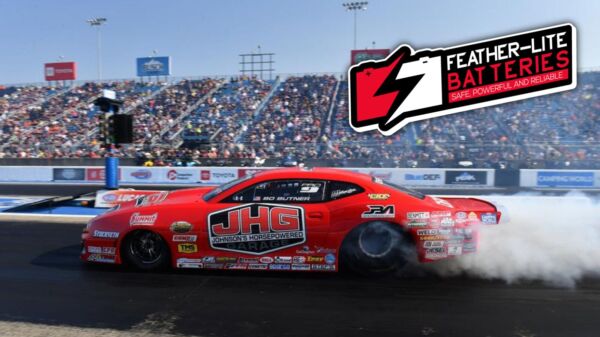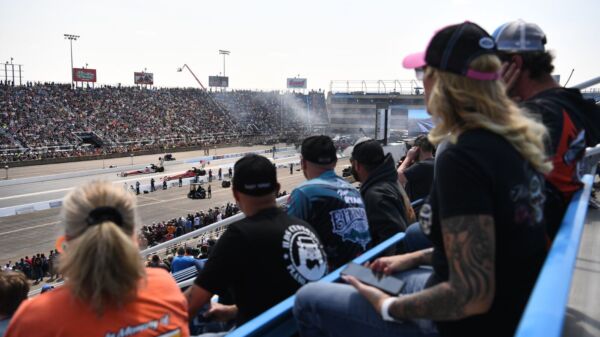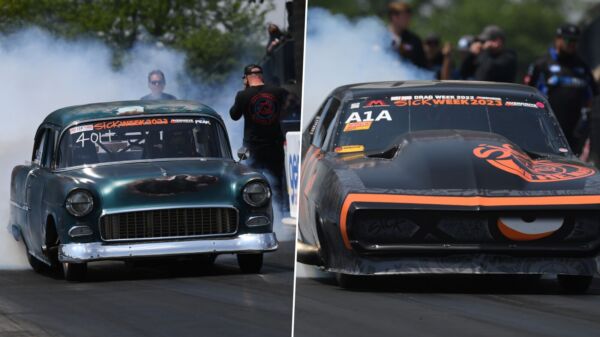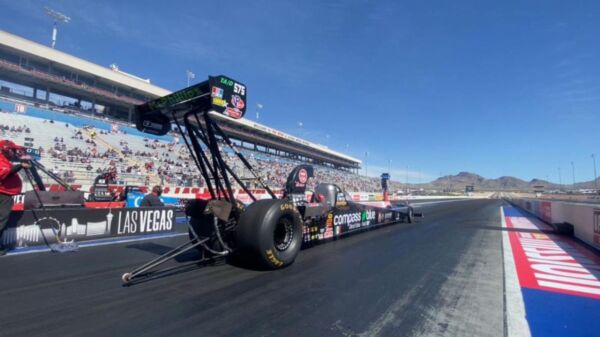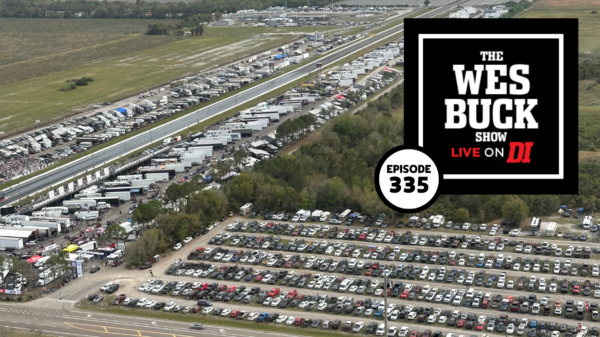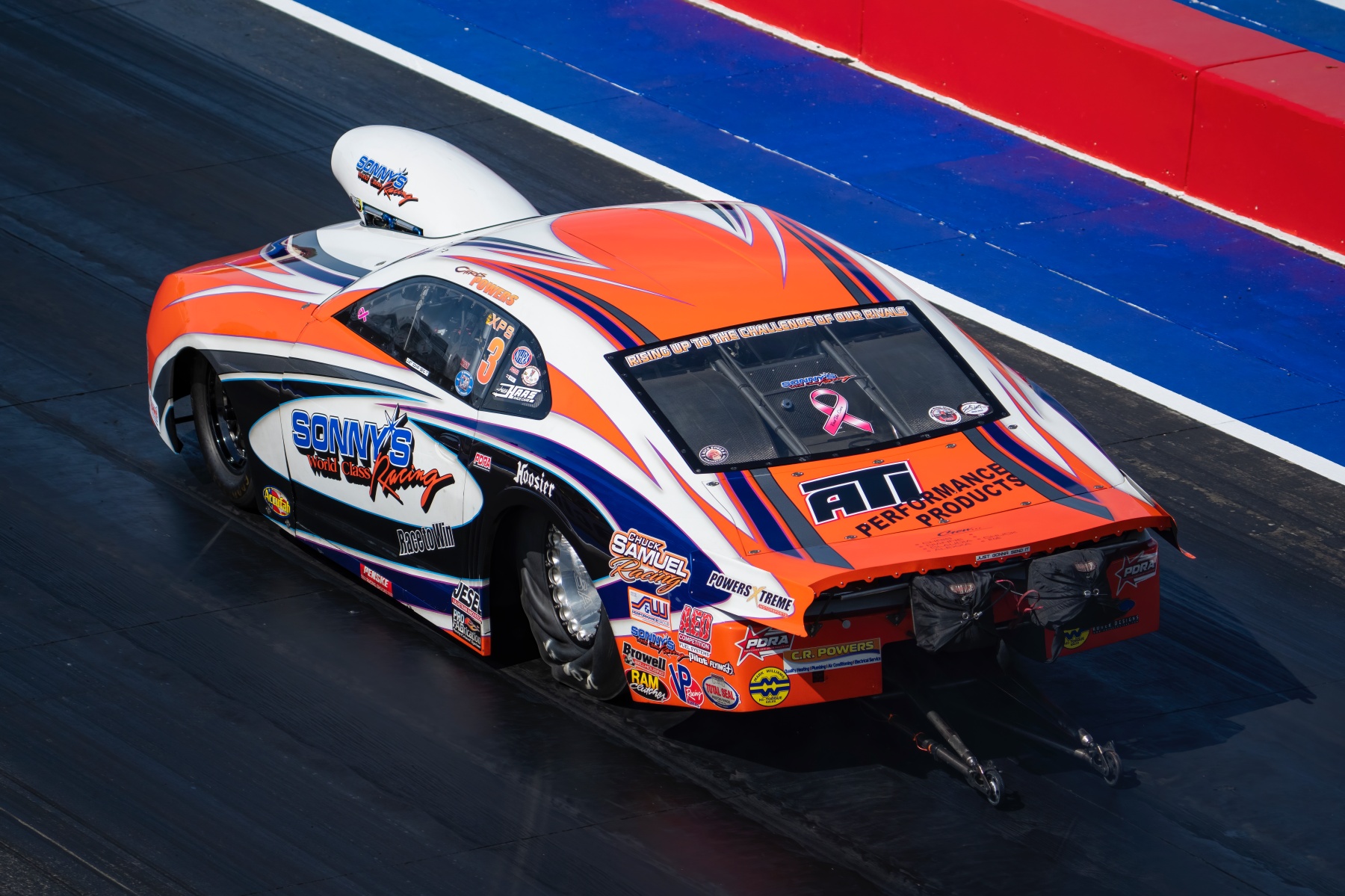For at least the last 15 years or so, Mountain Motor Pro Stock has been in a state of flux. It’s bounced around from sanctioning body to sanctioning body, from quarter-mile competition to eighth-mile racing, from a nationally touring class to one with segments in different regions of the U.S.
Unlike its 500-cubic-inch cousin, NHRA Pro Stock, the mountain motor brand of Pro Stock has remained fairly consistent in technology and performance, though. A somewhat unspoken gentleman’s agreement among the teams and engine builders has kept the class at a relatively affordable competition level. Engine development is kept to a minimum, with cubic inches ranging from 822 to 843 depending on the block type. Electronic fuel injection is allowed, though carburetors remain the class standard. Eighth-mile performances that were earth-shattering in the early 2010s remain on the list of the top 10 quickest passes in Mountain Motor Pro Stock history in 2021.
[Editor’s Note: This story originally appeared in DI #169, the State of Drag Issue, in July of 2021.]
The class is in an interesting spot going into the summer months of the 2021 season. The class has three different options to consider when it comes time to load up and head out to a race. The PDRA has offered Extreme Pro Stock as a class for all but one year since the all-eighth-mile organization formed in 2014. It’s served as a stable home for Mountain Motor Pro Stock racers, though the return of Kenny Nowling’s ADRL last year and the NHRA’s introduction of MMPS as an exhibition class in 2019 have divided the class again.
Fortunately, Mountain Motor Pro Stock drivers and teams are fiercely passionate about their class and its future. Teams have been known to field second cars at races to ensure a decent field, and drivers like John Montecalvo have even sent fill-in drivers to races they’re unable to personally attend.
Mountain Motor Pro Stock racers are an opinionated bunch, and they’re often quick to voice their opinions. Some opinions are polarizing, while others are shared across the class. For this Drag Illustrated Roundtable, we spoke with five different Mountain Motor Pro Stock drivers with varying backgrounds to get their thoughts on the state of the class.
After 2016 PDRA Extreme Pro Stock world champion John Pluchino decided to step away from driving in 2019, his son, Johnny Pluchino, picked up right where he left off. He won an NHRA exhibition race at Indy and a handful of PDRA events before winning the 2020 PDRA Extreme Pro Stock world championship in his first full season in the class. He’s also a two-time PDRA Pro Outlaw 632 world champion.
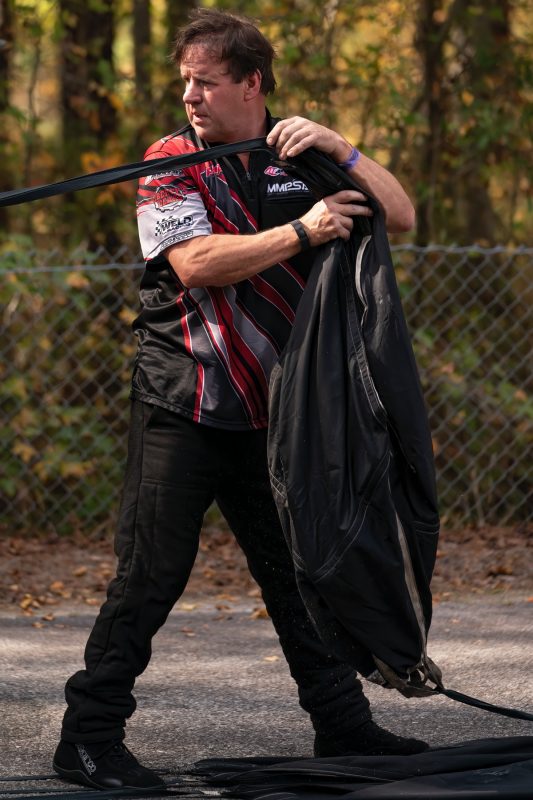
JR Carr
JR Carr is a veteran of the class, though he also has experience racing NHRA Pro Stock. In 2020, Carr and tuner Frank Gugliotta debuted a brand-new car that Carr promptly drove to his first two PDRA victories. He also broke the 6.10-second barrier in quarter-mile competition, recording a 6.179 at 228.23 MPH at the NHRA Midwest Nationals in St. Louis. The Washington native advocates for the class through the Mountain Motor Pro Stock Association, a group of racers that represents the class in dealings with NHRA.
As a third-generation driver, Justin Kirk has known Pro Stock his whole life. Following in the footsteps of his grandfather, hall of famer Carl Kirk, and his father, two-time IHRA Pro Stock world champion Doug Kirk, Justin won his first Mountain Motor Pro Stock race at the PDRA Doorslammer Derby earlier this year. The West Virginian drives for car owner Eddie Buck, an auto repair shop owner in Missouri.
John Montecalvo is one of Mountain Motor Pro Stock’s biggest advocates, as well as one of its most accomplished drivers. He’s won world championships in IHRA Pro Stock (2009), ADRL Extreme Pro Stock (2010) and PDRA Extreme Pro Stock (2019), with event victories and records to go along with those titles.
While a relative newcomer to the class, Chris Powers has made a major impact on PDRA Extreme Pro Stock since joining the class in 2017. He’s won multiple races in his Chuck Samuel-tuned Camaro, most recently winning the 2021 PDRA season opener as a tribute to engine builder and Mountain Motor Pro Stock supporter Sonny Leonard. He’s the current PDRA Extreme Pro Stock elapsed time record holder with a 4.007-second blast recorded in October 2019.
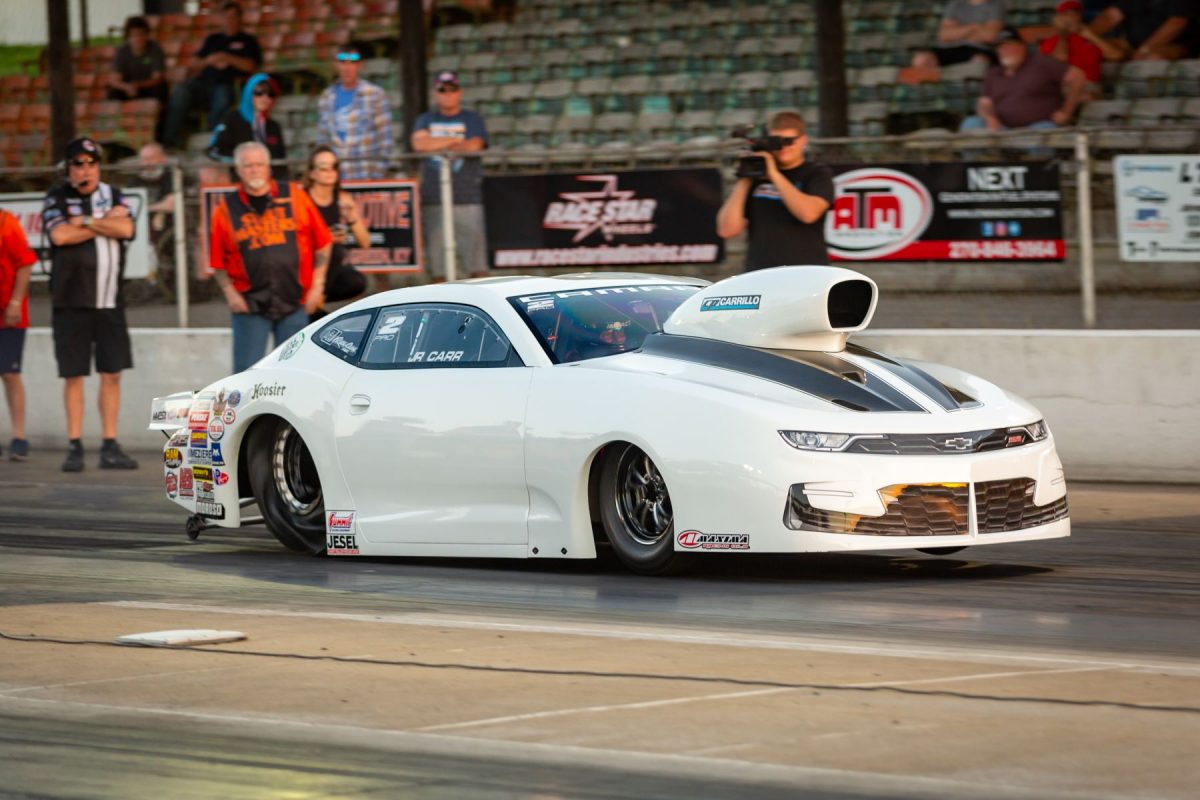
There are now three series offering a Mountain Motor Pro Stock class. Do you think that helps or hurts the class?
Johnny Pluchino: It hurts, mostly, in my opinion. If we had 100 MMPS cars spread throughout the country, I’d probably say it helps the class because you’re showing the class to different areas. But when we have a limited number of cars available, you’re cutting the pie into too many pieces.
JR Carr: It hurts in one way and helps in another. Geographically, there’s guys that won’t travel some distances, so it does get them out and gets them and the Mountain Motor car some exposure. It hurts us because then the car count is down at other places. It’s kind of a 50 percent good, 50 percent bad thing.
Justin Kirk: I think it hurts as far as I guess a financial standpoint. Everybody kind of feels like they have to support them all. As a whole I think it hurts it.
John Montecalvo: It’s kind of a double-edged sword. It helps the class in some ways because we have a lot of cars located out West that can’t make the PDRA series, so they’re going to lean towards the ADRL. There’s a select group that just wants to run quarter mile with the NHRA, then you have a select group that’s 100 percent loyal to the PDRA. I think in some ways it’s good, but in other ways it’s a detriment. Right now, we don’t have enough cars to run three series. What I see it doing is growing interest in the class and I see some new cars coming out over the next six months or so. That’s the positive to it.
Chris Powers: I think it hurts the class, to be honest. You’re spinning the class out. They’re each going to pull from whichever area those sanctioning bodies are in. The other guys aren’t going to travel to run the other circuits, they’re just going to stay in their own backyard.

Is it a challenge for you to decide which races to attend or which series to support?
Pluchino: You want to support anybody who gives your class an opportunity, but it’s hard to go race every race out there, especially for a team like us. Our goal is championships. We also want to support those who have been there for us over time. We kind of just look at everything and make the best decision possible for our team and our sponsors. Again, our goal is championships. Year after year, we want to wear the No. 1 on the car. That drives a lot of our plans.
Carr: It’s tough. I like the quarter mile. I always have. But the PDRA, the Franklins, they put their heart and soul into that deal and you can see it. It’s the same cars and the same racing, it’s just eighth mile instead of quarter mile. It’s an adjustment for me, but I want to do my best to support them as well as NHRA. So far, we’ve done a good job of that because there haven’t been any overlaps.
Kirk: When they overlap, it is hard to decide. [PDRA owners] Tommy and Judy Franklin, they’re just great people and you feel like you’re obligated to support them and PDRA. They gave us a place to race when we had nowhere else to go.
When you back up and look at the whole picture, it all falls back to the financial standpoint. For us, ADRL makes the most sense for my car owner. Eddie Buck is from the Midwest, so it’s definitely not a hard decision for him. But for us, it’s East Coast. When Dad gets his car out, where do you go? It’s pretty much put them in a hat and pull one out. The Franklins are just great people and it’s hard to not go support them.
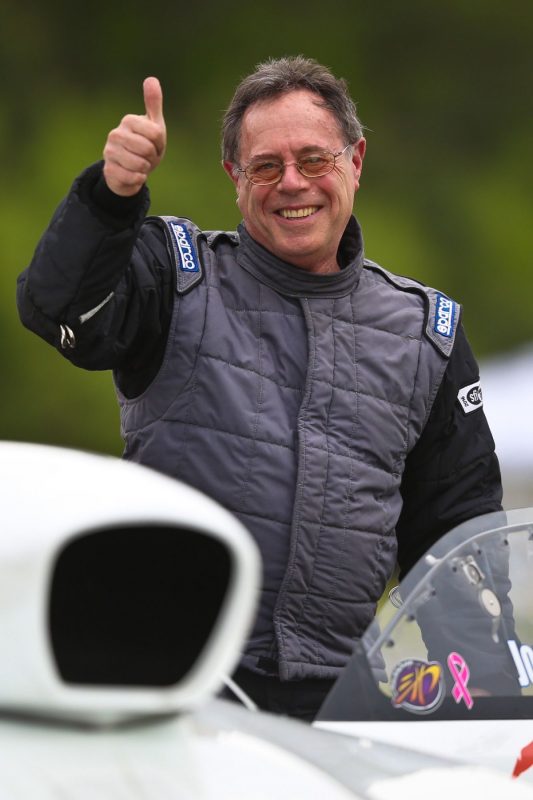
John Montecalvo
Montecalvo: At this stage, I’ve won three championships and I pretty much decided that I’m not going to chase points anymore. We’re just going to run and have fun and go wherever we want to go. Basically, it comes down to geography and what’s planned for that weekend. Is the boat more important that weekend? That’s what it comes down to for me. I feel like I’ve done everything I can do in MMPS. Quite honestly, I think the next challenge for me is probably to run some 500-inch Pro Stock races.
Of course, PDRA was there when nobody was, so we do owe them some loyalty as far as I’m concerned. Loyalty is big in my book. Kenny [Nowling] offers something that nobody else does and that’s great qualifying money for us, and in the past, it’s been great crowds. NHRA, it’s distinctly different. You’ve got great crowds and you’ve got quarter-mile racing, which neither of the other two offer.
Each one has their own unique benefits, and also some negatives. It really is difficult for me to say I’d want to focus on any of the three series. At this point, I want to spread myself around a little and enjoy the best of all of them.
Powers: I try to support everything. Anything I can support, I try to participate with. I’ll run all of them if it works and they don’t overlap with each other. We even looked at running some of the ADRL races, but it just didn’t make much sense for us to go to St. Louis and stuff. We definitely try to do everything we can.
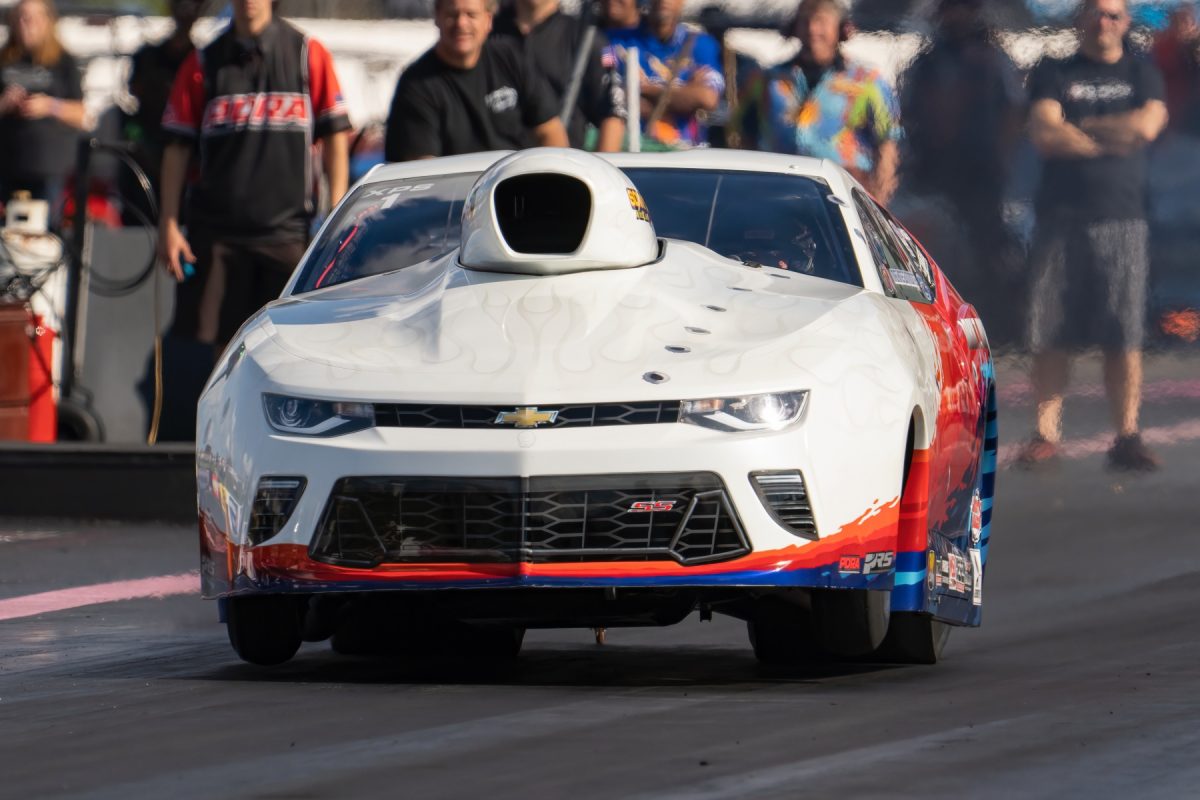
What can be done to attract new teams, or maybe bring back past competitors?
Pluchino: Well, we’ve gotta show some other teams that you can do it, that you can go in without having to spend your retirement fund or your life savings. You can go buy a car, buy an engine, and if you have the right people around you and you put the work in, you can go out and be competitive. We have to show Top Sportsman guys that it’s a step up to a pro class. We have to show our class’ worth.
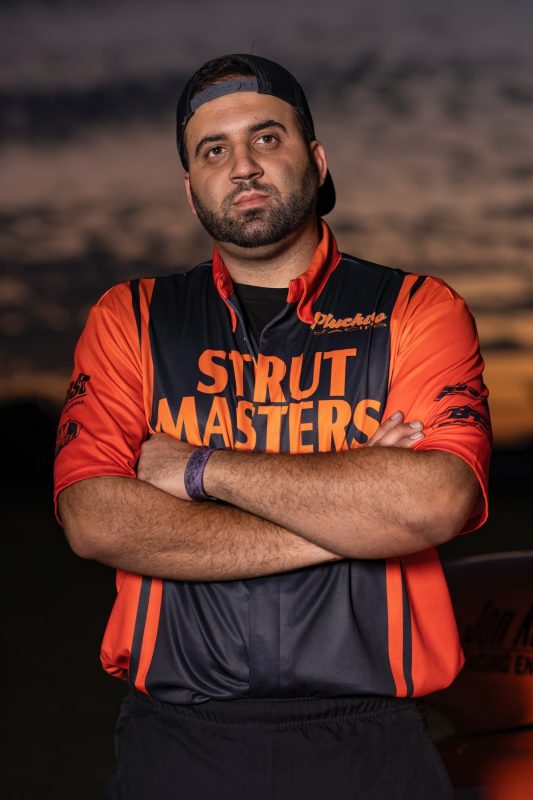
Johnny Pluchino
I think there’s been a lot of new faces coming in as of right now. When they start having some success, I think it’ll show others an opportunity.
As far as the guys sitting on the sidelines, there ain’t much you’re going to do about them. They have the stuff, they have the equipment. If they don’t want to come race, that’s their deal.
Carr: To bring in new people, we need people to realize that MMPS is a pretty efficient class to run. It’s probably the most economical pro class you can run as far as cost per year, per race. There’s a couple classes out there that are extremely hard to keep up with – changing pistons every night and all that kind of stuff – and we don’t do that. Our motors are lasting longer between freshen-ups. It doesn’t cost what some people think it probably does.
The guys that haven’t been out, they just need to find a crew member or a truck driver or something and they could be out. They have the stuff to do it and they can be there, they just have to push a little harder. I guarantee once they do and get back in the seat, they’d be showing up a lot more.
Montecalvo: That’s a tough question. I don’t understand why so many cars are sitting on the sidelines. There’s probably 28 Mountain Motor Pro Stock cars in existence. Whether it’s economics or some want to run quarter, some want to run eighth, I don’t know. But right now, with three different series, we have every option you can think of. So what’s it going to take to get some of the ones that are sitting back out again? Maybe the three series is too complicated for us. Maybe that’s a problem. I don’t know. Maybe if there was one series that had the benefits of all three, maybe that would get them to come out.
Other than that, I’ve called, I’ve begged. I’m very passionate about MMPS and I’ve done everything I can to try to get cars back out again. It gets to the point where I’m batting my head against the wall. I don’t know what it’s going to take. I really don’t have an answer for that. All I can say is we have to just keep doing the best job we can for MMPS. I think there’s going to be a lot of new players coming out.
Powers: Just from the four years that I’ve been racing over here, I think the payout is just not there. The thing I notice with a lot of guys is they don’t seem to care what the big number is, which is kind of what we look at racing for, but they want a lot of money for showing up. They want the free entry, they want the $2,000-4,000 to qualify and things like that. I think that’s the wrong way for the class to go, but that seems to be what a majority of the smaller teams want. They don’t think they can compete, so they want that.
But I think the bigger number would draw in more guys. If you start advertising $20,000 to win with eight or 10 grand to runner-up, I think it would draw some guys from Pro Mod to come back and participate. I think some of that is those teams don’t want to work. It takes a guy to call the shots with a clutch car, and I think that’s why some of the teams haven’t come back, guys that maybe thought about it.

The allure of racing at NHRA national events has drawn people to race various different NHRA classes. MMPS has had that opportunity a handful of times over the last few years. Do you think doing more of that kind of stuff would help bring more people to the class, or is it just kind of a unique opportunity to do once in a while?
Pluchino: It’s a nice opportunity to have. I enjoyed grabbing my first NHRA Wally, even though it was mini. But you can’t sell out just to be able to do it. You have to know your worth. If the right opportunity presents itself, we have to stick together as a class. If guys want to run NHRA so bad, they should put a little motor in their car and go run it. We need to stick together as a class first and foremost. There are times when going to an NHRA race is a good option for us. But at the end of the day, we have to have the marketing partners and the situation for it to make sense for us to go to those races and show our class.
Carr: Absolutely it will. There’s more exposure, some TV time, bigger crowds. Part of that is because NHRA targets the big geographic areas where you can get more fans. It definitely gained a lot of exposure for our class when we first went over there. Our momentum was great, then it was almost like putting the brakes on wide open. We had to take a break because of COVID. Unfortunately, it really took the wind out of our sails after the first four races we did. I can’t even say we’re back to where we started, but we’re close, and NHRA is doing what they can to help us. It is a great stage to be on, and it is quarter mile, so they already have something different to offer compared to what PDRA and ADRL are doing. That makes it different right up front.
Kirk: It could go both ways. If the NHRA would promote it on the TV like they said they would, it would get more people interested. It’s the only class left that a true gearhead would understand – takes two feet to drive, two hands to drive, and sometimes that’s not even enough. It would help if the NHRA would do their part to help push it. Show it on TV, explain the class like they do with the nitro classes. But it would help if we could get the push from the TV side of things. I think that would definitely help attract people. Attract racers? I don’t know.
Montecalvo: I think running NHRA definitely gives us more visibility. The response that we’ve gotten from the fans is phenomenal – it was actually over the top. When we first went to that exhibition at Indy, it was incredible the responses that we got back. Let’s face it, they have big motors, hood scoops, they have carburetors, they have fuel injection, and they’re a handful to drive. They move around, they’re not on a string. We get great fan response no matter where we run with NHRA.
The other thing is, let’s face it, NHRA is still the big show. People can say what they want, but I enjoy running over there. Quite frankly, it’s like being on vacation. We make two runs one day, we make two runs another day, we go out to dinner, which we very rarely get to do anywhere, and we race on Sunday. It’s kind of like the old IHRA days when we raced quarter mile.
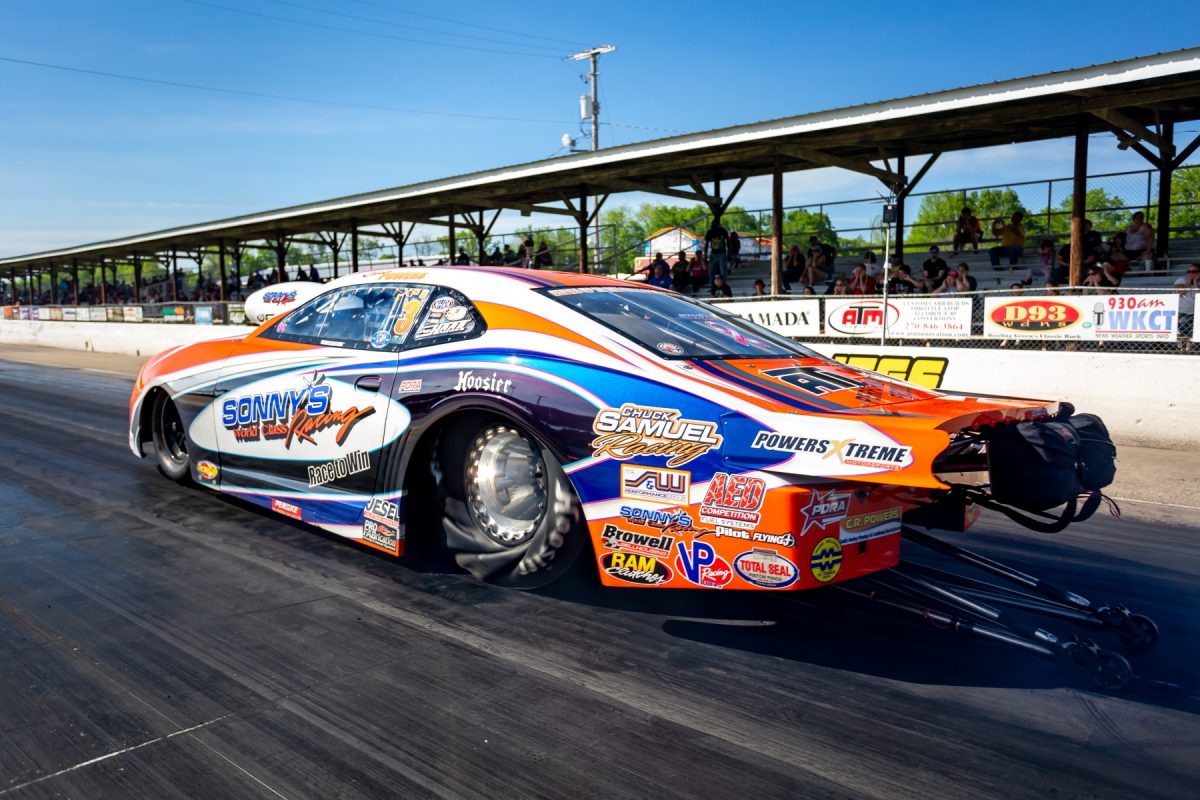
The 3-second barrier has been a topic of discussion for quite a few years now. Several guys have come close, but no one has done it in competition. Is this the year it finally happens? What will it mean for the class when that happens?
Pluchino: This is the year, last year was the year, the last two years were the year. We need the conditions and we need the run. We all have the stuff to do it. You have to put the conditions and the run together. JR is leading that hunt right now. He’s showing that he has the performance advantage over everybody in the class. We feel like we can be right with him, and we have been extremely close at times. It would mean a lot to me to be able to get it done first, but there’s a number of competitors who can get that done.
Unfortunately, when you’re racing the majority of your races in warm weather, you only have one or two races where you can potentially see that weather. You need the conditions to line up. We don’t race 20 times a year. If we race 10 times a year it’s a lot, and most of them are in the heat of the summer. No one is going to do it then. Ma Nature needs to work with us.
Carr: I think it will happen this year. Just a little bit of weather and we’re there. Everybody has stepped up their programs and everybody is running better. I think this is the year it does happen. For any racer in any class, to be the first to do something, it’s huge. Who can’t remember Kenny Bernstein, first to 300? You just don’t forget those things. It would mean a lot for the class. It would be tremendous.

Justin Kirk
Kirk: If it happens, it will happen at either PDRA Virginia at the end of the year or at ADRL St. Louis in the fall. It just depends on conditions. What will it do for the class? I don’t know that it will change much. There’s just not much R&D anymore. There’s not enough cars out there for the likes of Sonny’s or Kaase to try new things. Everybody in the class, working people, they have to be back to work on Monday. They don’t have the time to try to find every little thing. As far as what it’ll do for the class, it’ll blow it up for a while. I just don’t know that it’ll happen this year. I don’t think it’s the year.
Montecalvo: It’s positively going to happen this year. If I had to put a favorite out there, it’s a white car with black stripes on it. I think we’re all nipping at JR’s heels right now. I think there’s probably five cars that can do it, it’s just a matter of the right day and the right conditions. We’ve all got pretty good power. You have Mike Allen power, Jon Kaase, Sonny [Leonard], Frank [Gugliotta]. I think every one of those are doing a great job. I don’t think power is our issue. I think the way we run our cars is the issue.
What’s it going to do to the class? I think that’s the last milestone. I don’t see anything topping that for a while. JR ran in the teens last year. I think that was a big deal to run quarter mile in the teens. That was definitely a milestone. But I think it’s going to bring a lot more excitement. I think it’s going to attract more people to the class. We really need to run in the 3s.
Powers: I don’t know if it will mean much for the class. I think it will be set this year. We plan on doing it. But I don’t know if it will mean anything for the class. I think it’s a stretch for some guys to get there. But I think it would mean a lot to the guy who put the motor together in that car and the driver and the team itself. That’s what it would mean the world to. I don’t think it will have any effect on the class whatsoever.
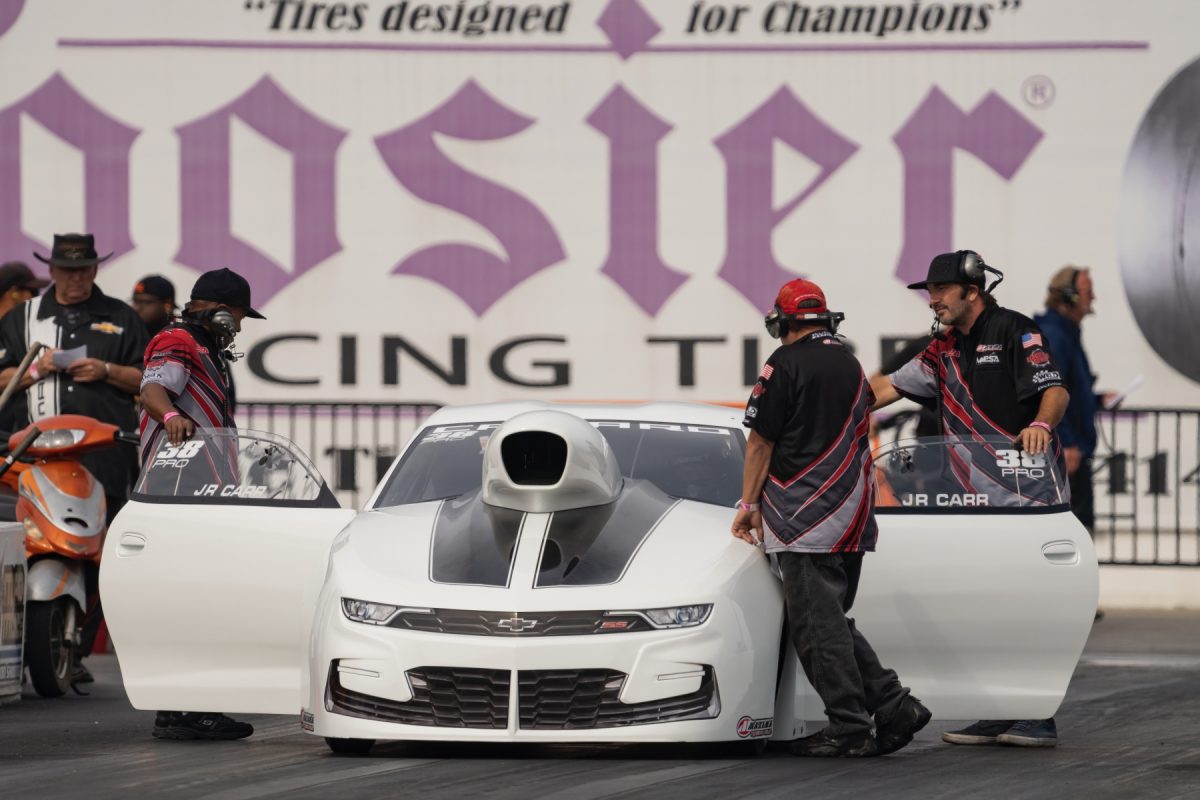
The class has been running in the 4.00s for the last 10 years or so and using basically the same technology, whereas a lot of other classes have seen huge changes in performance and technology. Is there something that should be done to kind of freshen it up and pick up performance, or is the class in a good spot as far as that goes?
Pluchino: I wouldn’t touch anything. If we start changing bore space rules, cubic inch rules, things like that, all our stuff is junk. We can sell it for pennies on the dollar. Then we all have to go out and build new stuff just so we can pick up a couple hundredths and show guys that we can go 3.95 or 3.94. I think we work with what we have. I think that’s the best thing for the class.
At the end of the day, we need more cars and competitive, side-by-side racing. We want to keep it somewhat affordable pro racing – the word “somewhat” is big there. We don’t need to add additional expenses to a class we’re trying to increase participation in.
Carr: It’s in a good spot, but there’s always room for improvement with parts availability and some different combinations. Everybody needs to remember it is racing gasoline, no superchargers, no nitrous, none of that stuff. It takes a lot of power just to move up a tenth – a lotof power. These motors, they’re not at their max by any means, but it isn’t like you can find 200 horsepower in a year. It’s not going to happen. It’s a lot like 500-inch [Pro Stock] – you make small gains, 5-10 horsepower, and it takes a lot of time and effort just to get to that. I think we’re in a good place. I think there’s definitely room for improvement on a few pieces, but a lot of guys don’t like change either. You have to be careful what you wish for.
Kirk: I think the class is in a good spot as far as that goes. We’ve struggled to get eight cars. Now we’re starting to see 10 or 11. We’re inching back up. We have Dad’s car together now. You start getting a car here and a car there, you’re back up. If you change something big – the talk of a 5.3 bore space was the talk for a while – if you do that, it’s just going to kill everybody that doesn’t have the funding to make those changes. To keep the class where it’s at and maybe get some of the cars back out, it’s fine where it’s at.

Chris Powers
Montecalvo: Right now, I think the class is in a pretty good spot. I don’t think these mountain motors are tapped out yet. You have a couple new people working on them from what I understand, and it will be interesting to see what they can do with them. I think in the past, Jon Kaase and Sonny have done a good job of keeping the class within reason as far as expense goes. It’s kind of a double-edged sword. We want to go faster, obviously, but we also want to keep this class affordable.
My personal opinion, I think there’s more in the car than there is in the engines. We just have to learn how to run these cars a little bit differently than how we’ve been running them.
Powers: I think the door needs to be open for other fuel injection options. We’re a fuel injected car. There’s only a couple of us. I think that’s the future, to go that way, being that it’s not a big difference in expense. I think that would draw in other guys, if you could open the door to other fuel injections, not just like the Big Stuff like we run. Holley and some of the other companies, I think they should allow them to come in.
The problem I think everyone complains about is you can’t really police it, but we’ve proven that the fuel injection’s no better than a carburetor, it’s just you always have a good set of carburetors on the car. I think that opens the door for newer guys to get on board because you can go buy it off the shelf and you have the same top end as we have instantly, and you don’t have to mess around with the carburetor stuff.
I don’t think there’s much else you can do to the cars. You can lighten them up more and tell people you’re going to lower the weight down to 2,350. The problem is we can’t get there. It’s just impossible. So the weight is not going to help the class.
I wouldn’t necessarily say to go to a bigger cubic inch. I think that would be the wrong thing to do. Because of the older guys you still have in here, they’re not going to go out and build 5.3 bore space motors. I think that would be a bad move for the class.
This story was originally published on August 12, 2021. 


